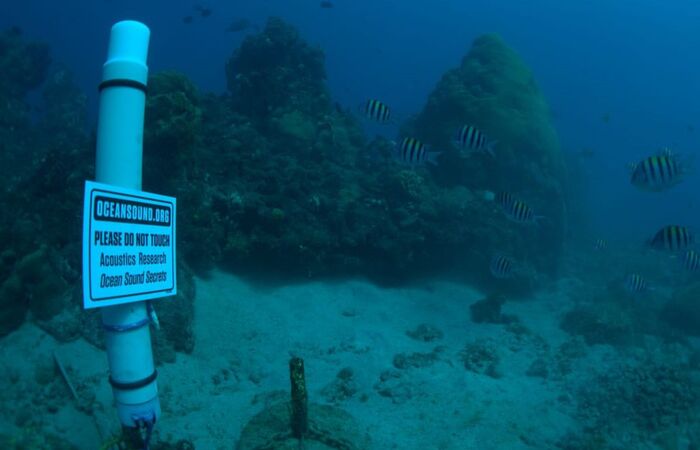 |
|
| Raul Rio / Ocean Sound |
Using the bioacoustics tool to conserve marine biodiversity is a proposal from the team of researchers, coordinated by Professor of Veterinary Medicine at the Federal University of Juiz de Fora (UFJF), Raúl Rio, who has begun work for the easiest oceanic island of logistics, Fernando de Noronha. The volcanic archipelago is located about 350 kilometers off the northeastern coast of Brazil.
The project uses bioacoustics to assess the behavior of cetaceans that harbor oceanic islands. “When we talk about cetaceans, we are talking about whales and dolphins, including porpoises, on the four oceanic islands of Fernando de Noronha, the archipelagos of São Pedro and São Paulo (which belong to Pernambuco), and the Atoll das Rocas (a group of islands associated with the state of Rio Grande do). Norte), Trinidad and Martins Vaz (an archipelago located in the Atlantic Ocean, off the coast of Espiritu Santo),” the UFJF professor told Agência Brasil.
On these islands, the group already has a structure set up and mandates from the Brazilian Institute for the Environment and Renewable Natural Resources (IBAMA) to conduct studies. Raúl Rio is also the president of the non-governmental organization Ocean Sounds (NGO), which brings together national and foreign researchers using bioacoustics in scientific research.
sound effect
The researcher pointed out that Fernando de Noronha chose to start the work was also due to the huge acoustic effect generated by the growth of dolphin tourism activity, whether by boats, Hawaiian boats or watch boats. “It is something that worries us a lot. All of this has had a huge impact on the behavior of the dolphins in Noronha, which has changed a lot in recent years.”
The teacher explained that the dolphins used to stay in a place known as Baía dos Golfinhos, where a microphone was installed to pick up sounds in the ocean. “But we have already noticed, in recent years, that they are distributed over different parts of the island, and, oddly enough, one of the points is the port, where there are a large number of ships.” He stated that this paradoxical relationship between the effect of human noise and bringing animals closer to more populated areas is an unknown factor that researchers want to better understand.
The team at Fernando de Noronha is made up of seven researchers. Research is also important because dolphins inhabit the island. In the morning, they look for shelter in the clear waters where they can rest, socialize, take care of the pups and breed. At night, they leave the island to feed on squid, shrimp, and fish that thrive on the more accessible surfaces of the ocean. The dolphin population of Fernando de Noronha is estimated to be around 2,700 animals, averaging 250 to 300 per day.
Preservation
“This is one of the attractions of Noronha,” notes Raul Rio, and for this reason, he advocates the importance of preserving the species to ensure their quality of life and also to preserve the island economically. “We want to use science and research to provide subsidies so that managers can use this information to generate public policies that allow for a sustainable balance between tourism and conservation.” It also highlighted the need for environmental education for visitors. It is a multidisciplinary issue, related to environmental education, involving tourists, residents and authorities on the island. It is essential that everyone has this long-term awareness.”
Employment at Fernando de Noronha has a minimum expected period of five years. “It’s a long-term project that we call long-term acoustic monitoring.” The researcher and the NGO Ocean Sound are looking for partnerships to help buy the equipment, which is very expensive.
In early 2022, bioacoustics research will extend to the islands of São Pedro and São Paulo; It will arrive at the Das Rocas Atoll at the end of that year or the beginning of 2023; From there it will cover Trinidad and Martins Vaz. “Once the research starts, it doesn’t stop. We will add the other oceanic islands to our calendar so that, within four years, we can have a complete and continuous observation of the four oceanic islands,” concluded the researcher and professor at UFJF.

“Wannabe internet buff. Future teen idol. Hardcore zombie guru. Gamer. Avid creator. Entrepreneur. Bacon ninja.”

